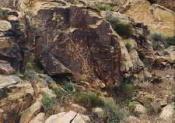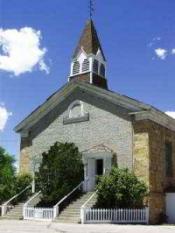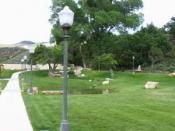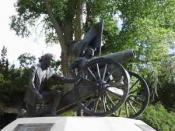35 East 100 North
Parowan, UT 84761
Phone: (435) 477-3331
It is impossible to say just when the settlement of Parowan actually began. Undoubtedly it was settled centuries ago by Native American Tribes. Native American civilization is evidenced by the many sites containing petroglyphs. Others came also. In 1776, while the continental Congress was deliberating American independence in Philadelphia, Father Escalante was exploring this area.

But the settlement that exists here today is traceable and well documented. In 1847 Brigham Young entered the Salt Lake valley which was then Mexican Territory. Young was the leader of the Mormons (members of the Church of Jesus Christ of Latter-Day Saints) and considered a prophet by members of the church. He announced that they had reached the place they were seeking as a refuge from the persecutions they experienced in states like New York, Pennsylvania, Ohio, Indiana, Illinois, Missouri and Iowa.
Almost immediately scouting parties were sent to find places to relocate the masses of people coming across the plains. In 1849 Parley P. Pratt, a Mormon Apostle, was sent to the south. He camped at Parowan and erected a flag pole which still stands today. He found water, game, and plenty of room to grow the crops necessary to sustain a settlement.

On January 13, 1851 a settlement party led by Apostle George A. Smith settled Parowan. Within one week the necessary governmental officers were elected in what was now United. The area was rich with resources: water, timber and Iron. What was first called “The City of the Little Salt Lake” was renamed Parowan, a Native American name meaning “evil water”.
As southern Utah’s Mother Town, Parowan would become the seat of Iron County. Soon homes were begun and a church was started. The church still stands in the very center of the town square. Many of the era’s adobe structures are still in use.

On January 13, 1996, Parowan’s 145th anniversary, a Heritage Park was dedicated by Mormon Church Prophet/President Gordon B. Hinkley.
The park is on the southern most end of the community’s Main Street and is overshadowed by Pratt’s flag pole. The park, funded primarily by private donations, depicts the rich heritage of the community.
Parowan has a rich heritage but it is not a community trying to remain in the past. The city boasts its own municipal power system and excellent utility distribution system.

Tourism is important to the community. Parowan is centrally and conveniently located near Brian Head Ski Area, Zion National Park, Bryce Canyon National Park, Cedar Breaks National Monument and various other spots of national and local interest. The community has an affinity for theater and the arts and meshes that fancy with a self sustaining, pioneer spirit.
You will enjoy your visit to Parowan. Whether you are here for a parade or a rodeo, the county fair or a “local talent” play at the community theater, you will find the atmosphere friendly and inviting. Join us for a day, a weekend or longer. We look forward to your visit.
For information or questions about Parowan’s history, contact Sandra Benson or Steve Decker, City Historians, at stevedecker477@gmail.org.